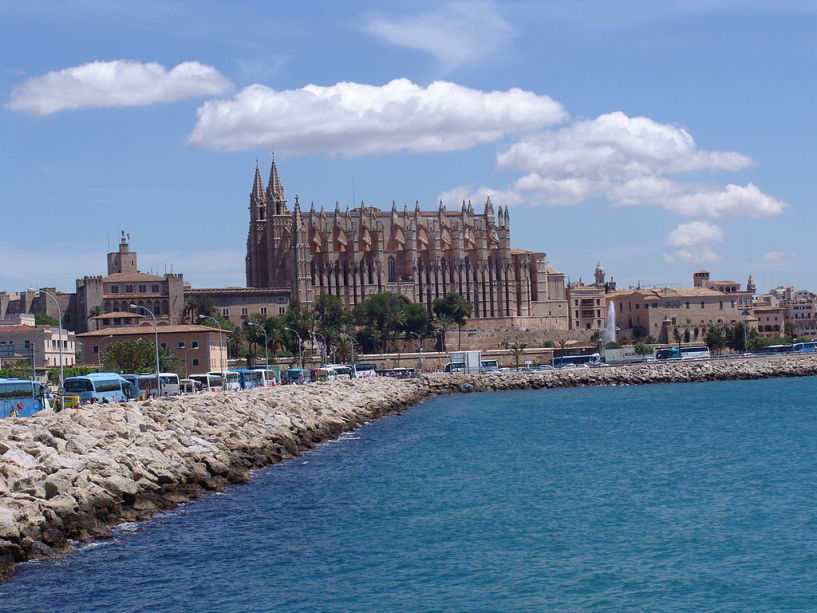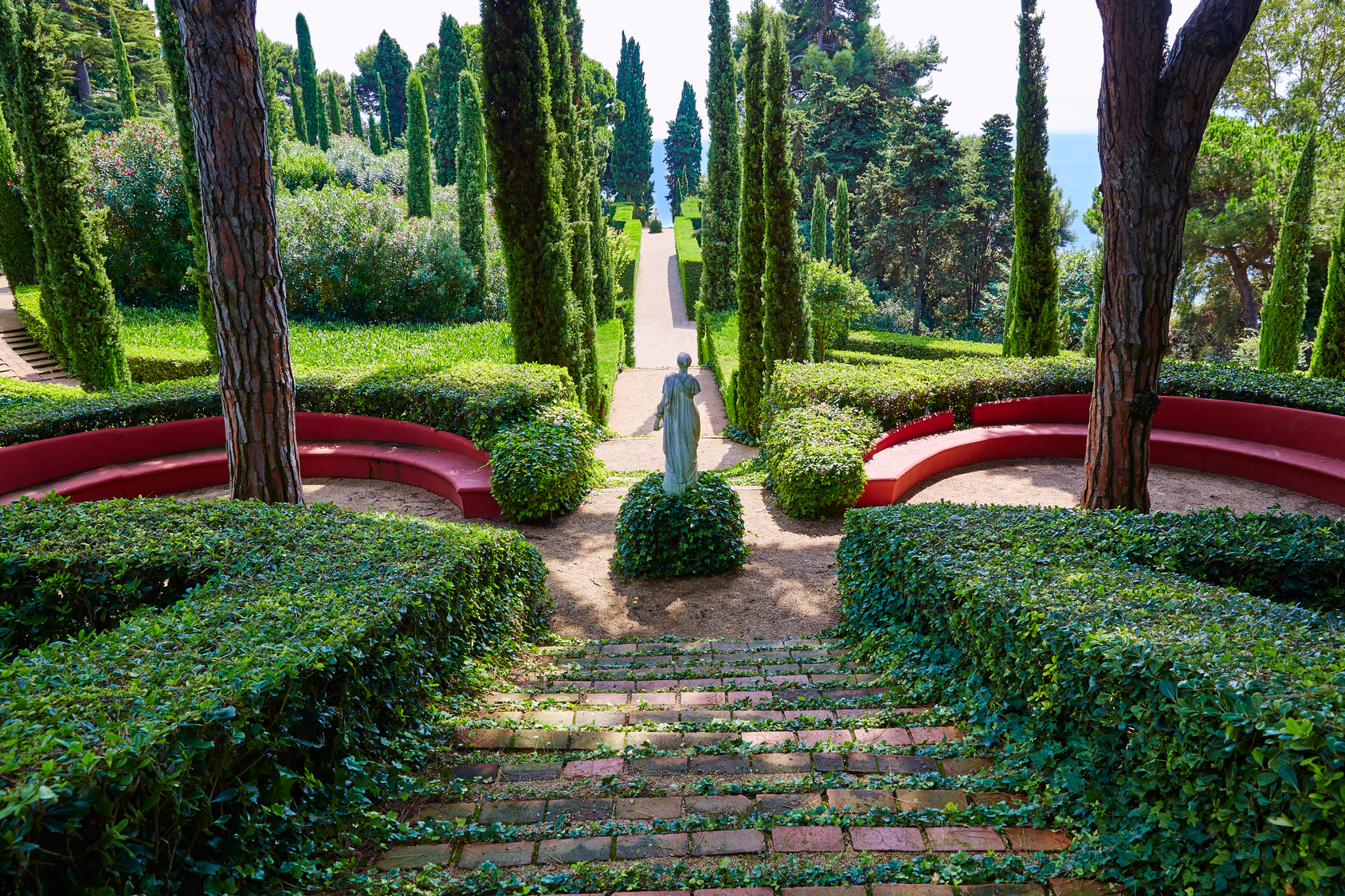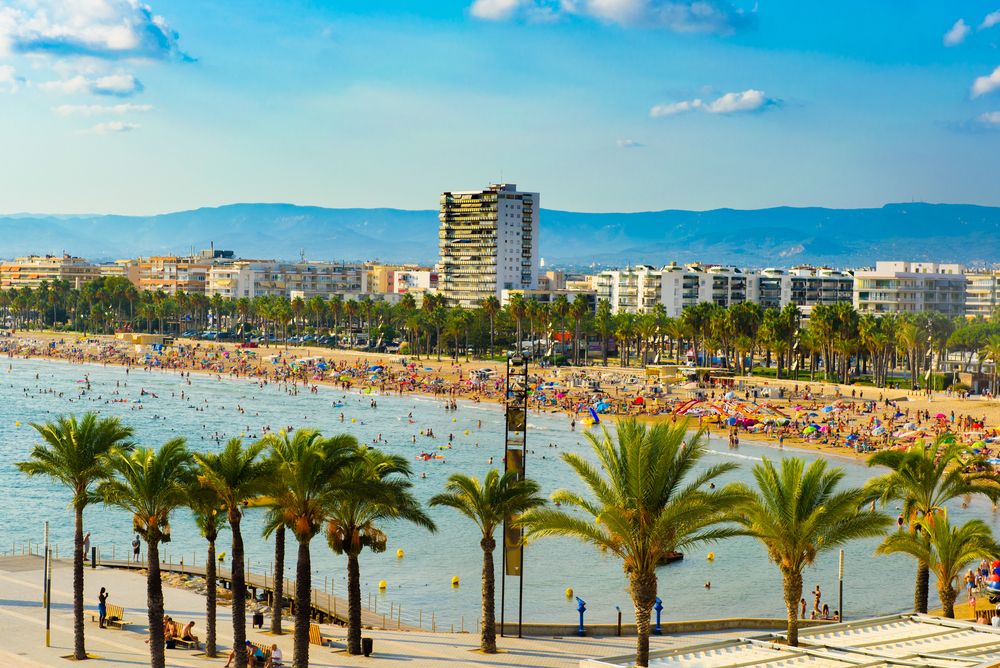The typical package tourist in Europe rarely travels far beyond the vicinity of their hotel during their summer holidays. Instead they prefer to spend most of their days at the pool or the beach rather than venturing out to discover what lies beyond the confines of their holiday resort. As a result there are some quite spectacular tourist attractions, beautiful cities and quaint villages which go unvisited as the attraction of the sun and sand is too much to encourage any divergence from the daily routine.
A case in point is the Mediterranean island of Mallorca. On arrival at Palma de Mallorca’s Son Sant Joan Airport, holidaymakers board their buses and head for popular resorts all over the island such as Magaluf, Palma Nova, Alcudia or Puerto Pollensa. Only a fraction of these tourists will find time during their stay to visit the island’s capital city, Palma de Mallorca, which lies just 8km west of the airport. Don’t make that mistake. Palma de Mallorca is one of the most beautiful cities in Spain and is easily accessible from all over the island.
If you can find the time to pay a visit to Palma during your holidays you won’t be disappointed. However, if the ‘summer holiday experience’ is too overpowering, you can always return to Palma de Mallorca for a short break at anytime as Palma is well known nowadays as a year round city break destination.
What to See in Palma de Mallorca
The beauty of the city is its location overlooking the Bay of Palma. You can walk the whole length of the waterfront along the Paseo Marítimo from in front of the Cathedral past the marinas as far as the cruise ship terminal at Caleta des Mal Pas. The main attractions to look out for during your visit are as follows:
La Seu Cathedral: Palma’s iconic attraction is its Gothic Cathedral whose origins can be traced back as far as 1229 when construction began on the site of a former Moorish Mosque. It wasn’t completed until 1601 and underwent a restoration in the early 20th century in which Catalan architect Antoni Gaudí played a minor role.
La Almudaina Standing right next to the Cathedral is the Royal Palace of La Almudaina which was formerly the city’s Alcázar (fortress) during the Moorish occupancy of Mallorca (902 to 1229).
Historic Old City: Behind the Cathedral and La Almudaina there’s a web of streets where the Moorish influence is evident. It’s highly recommended that you take a stroll around this historic district which boasts some quite fascinating architecture amongst its private houses, small museums and art galleries. Be sure to look out in particular for the town hall building (‘Ajuntament’ in Mallorcan) and the Arab Baths (Banys Àrabs) which serve as another reminder of the Moorish influence on the city.
Bellver Castle: If you stand on the Paseo Marítimo near the Cathedral, look to the west and you’ll see the 14th century Bellver Castle looking down on the city. This castle is quite unique as far as castles are concerned as it the structure is round. If the walk to it is too much for you just take the ‘hop-on, hop-off’ bus service which goes there. The city of Palma de Mallorca’s history museum is housed at the castle and is well worth a look.
Sóller Train: Time permitting you really ought to try to fit in a visit to Sóller on the north-west coast of the island travelling on the historic train which departs from Plaça d’Espanya. This railway began operations in 1912 when it served the logistical requirements of the island’s citrus fruit industry. Today it is exclusively a tourist excursion running 27km from Palma de Mallorca to the town of Sóller through quite stunning landscapes. Having arrived at your destination via 13 tunnels you can hop on a tram which takes you a further 5km to the Port of Sóller which is a great spot for lunch before the return journey to Palma.
[mapsmarker marker=”38″]
Getting to Palma de Mallorca
Of all Spain’s airports only Madrid and Barcelona Airports have more passengers than Palma de Mallorca which saw more than 24 million people pass through its terminals last year. It welcomes flights from a vast number of airlines from all over Europe with most tourists arriving from Germany and the United Kingdom. Such is the island’s popularity with German tourists that it has jokingly been referred to as ‘Germany’s 17th federal state’! Air Berlin offer flights to Palma from many destinations as do popular budget airlines including easyJet, Ryanair and Vueling. Major tour operators such as Thomas Cook and Thomson Holidays are also very active in bringing large numbers of holidaymakers to the island.
On arrival in Palma you may find that walking to the luggage collection area and finally getting your bags takes a little longer than you’d ideally hope for. But once you’re out of the terminal there are plenty transfer options for getting into Palma itself or to resorts all over the island.
Holiday Company Buses: Depending on who you book with, your tour company may include transfers as part of your package or as an optional extra. This transfer option can be a bit of a lottery depending on whether your hotel is one of the first drop-off points or one of the last.
Car Hire Transfers: Millions of visitors choose to rent a vehicle online before travelling which not only provides them with transfers but also gives them the flexibility of their own transport during the holiday.
Taxi Transfers: Naturally there’s an abundance of taxis waiting outside the arrivals area to take you anywhere on the island. This isn’t a bad option for visitors to Palma but as a rule you’d generally be better off pre-booking a shuttle bus or private transfer to your destination with the likes of Shuttledirect who will confirm a fixed, pre-paid price before you travel. Another advantage of these private shuttle companies over taxis is that you can inform them that you’ll be needing a baby seat if travelling with young children which would rarely be available with a taxi.
Public Buses:
Every 15 minutes there are public buses departing from outside the arrivals terminal to the Paseo Marítimo and other stops in the centre of Palma (Route 1). Buses to S’Arenal (Route 21) depart every 30 minutes. This isn’t a good option if you’re travelling with much luggage and/or young children. For the rest of the island you’d need to go to the central bus station in Palma de Mallorca to make connections which is far less convenient than pre-booking one of the shuttle transfers suggested above.
[mapsmarker marker=”83″]
Where to Stay in Palma de Mallorca
Castillo Hotel Son Vida (Carrer Raixa, 2): This hotel is well established as one of the most exclusive on the island. It is located on the top of a hill on the outskirts of Palma with views towards the city and the sea beyond. It meets all the expectations of a 5-star property in terms of its rooms, restaurant and service but may be a little too far from the historic centre for some visitors.
Can Cera Hotel (Carrer Convent Sant Francesc, 8): If you’d prefer to stay in a luxury hotel right in the city centre then you really should consider this historic gem which is right in the old town. Thoroughly charming place within easy walking distance of all the main sights of the historic centre of Palma.
Palma Bellver Hotel (Paseo Maritimo 11): Perhaps not in the same class as the first two recommendations but easier on the pocket is the very popular TRYP Palma Bellver. It is in an excellent location, just a 10 minute walk from the Cathedral, with a fabulous swimming pool and views over the Bay of Palma from the front rooms.




